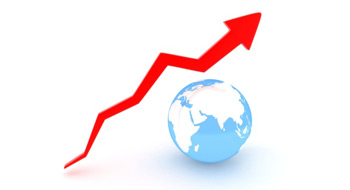

Investor confidence was on the rise in June, according to State Street’s Investor Confidence Index (ICI). The Global ICI rose by 7.0 points from May’s reading of 86.5 to reach 93.5—its highest level this year.
Risk appetite among North American institutional investors climbed 5.7 from May’s revised reading of 88.1 to reach 93.8, while sentiment among European institutional investors rose 4.5 points from May’s level of 98.0 to reach 102.5. Asian investors displayed a more modest improvement in risk appetite, reflected in an increase of 1.0 in the Asian ICI from May’s final reading of 89.4 to 90.4 in June.
“Beginning around the middle of the month, we began to observe some concerted buying of equities by institutions, at a pace not seen for almost two years,” said Kenneth Froot, a Harvard University professor and co-developer of the index. “The buying was relatively broad-based and diversified across sectors. At 93.5, the Global ICI remains well below the neutral level of 100, so it cannot be said that investors have become bullish. However, it is fair to say that they have tempered their bearishness a little.”
“The appetite for global equities is strongest among European institutional investors, reflected in the fact that the European ICI is 2.5 points above the neutral level of 100,” said Paul O’Connell of State Street. “We can also see this in the sectoral decomposition of flows, which shows some rotation out of safe havens and into more risk-sensitive sectors. To some extent, the buying of U.S., U.K. and Asian equities by European institutions may say more about their euro-currency concerns than it does about high expected returns for those markets.”
The ICI measures investor confidence or risk appetite by analyzing the buying and selling patterns of institutional investors. The index assigns a precise meaning to changes in investor risk appetite: the greater the percentage allocation to equities, the higher risk appetite or confidence. A reading of 100 is neutral; it is the level at which investors are neither increasing nor decreasing their allocations to risky assets.
